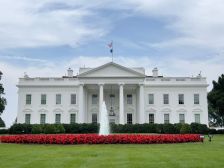White House releases final draft of IT modernization report

A day after the president signed legislation to help modernize the federal government’s IT, the White House unveiled its plan to achieve that goal.
The White House Office of American Innovation unveiled the final copy of its IT Modernization Report on Wednesday, incorporating more than 100 comments from a variety of stakeholders on how to upgrade the federal government’s aging technology infrastructure, following the August release of its draft report.
“The report is a key piece of our efforts to modernize federal IT, with a particular focus on cybersecurity and shared services,” Chris Liddell, White House director of strategic initiatives, told reporters on a conference call Wednesday.
He added: “We made some changes throughout the report and a high-level summary of the major areas touched on by the comments received was added to the report as Appendix G.”
The report offers 50 actions centered around network modernization and consolidation, coupled with shared services implementation, to foster future adaptability.
“The report really lays out several of the changes that we believe need to be done and were effectively validated by our industry feedback,” Jack Wilmer, senior policy advisor for the Office of Science and Technology Policy, told reporters.
The report puts an emphasis on shifting much of the government’s IT infrastructure to a service model, leveraging technology like cloud computing that can be provided by technology contractors.
To achieve that, the administration plans to channel those capabilities through shared services, where designated agency providers will manage select operations provided to multiple agencies.
Wilmer said that the administration funneled the more than 100 comments from industry on the report into themes of:
- Modernizing the acquisition process,
- The challenge of vendor-locking and interoperability of service systems, and
- Future-proofing infrastructure for emerging technologies.
To tackle the issues around streamlining acquisition, administration officials said they were leaning on the Office of Management and Budget’s Office of Federal Procurement Policy to examine which policies could be applied to make government tech buying more agile.
The report does outline a pilot program the federal government will pursue to implement cloud email adoption.
“By creating virtual ‘street corners’ for cloud email providers the federal government can use competing market forces to drive government-wide volume pricing as a lever to speed migration,” the report says.
It continues: “This will apply Hotelling’s Law of spatial competition, wherein Government’s potential purchasing power will be used to negotiate tiered pricing agreements directly with the providers and result in publicly displayed price points, total number of licenses purchased and the remaining number of mailboxes that need to be migrated. This volume pricing would serve as the base rate for any license purchased by the government.”
As far as the adoption of future technologies, administration officials said they wanted to keep the guidance flexible enough to allow for agencies to unplug old technologies and apply new ones.
And while some “centralized initiatives” are expected in the near future, White House officials said much of the implementation specifics will be determined by agency leaders.
Liddell said the report’s action plans would begin in January and would be leveraged by further collaboration with the tech sector.
“We found the exercise of engaging with the industry beneficial,” he said. “Its overall comments reaffirm the importance of modernizing federal IT and I think elevated the proposed approaches on the right track.
“We certainly feel like transparency and engagement is the right way to go,” Liddell said. “We look forward to continuing engagement with the industry as agencies themselves accelerate their modernization activities.”






